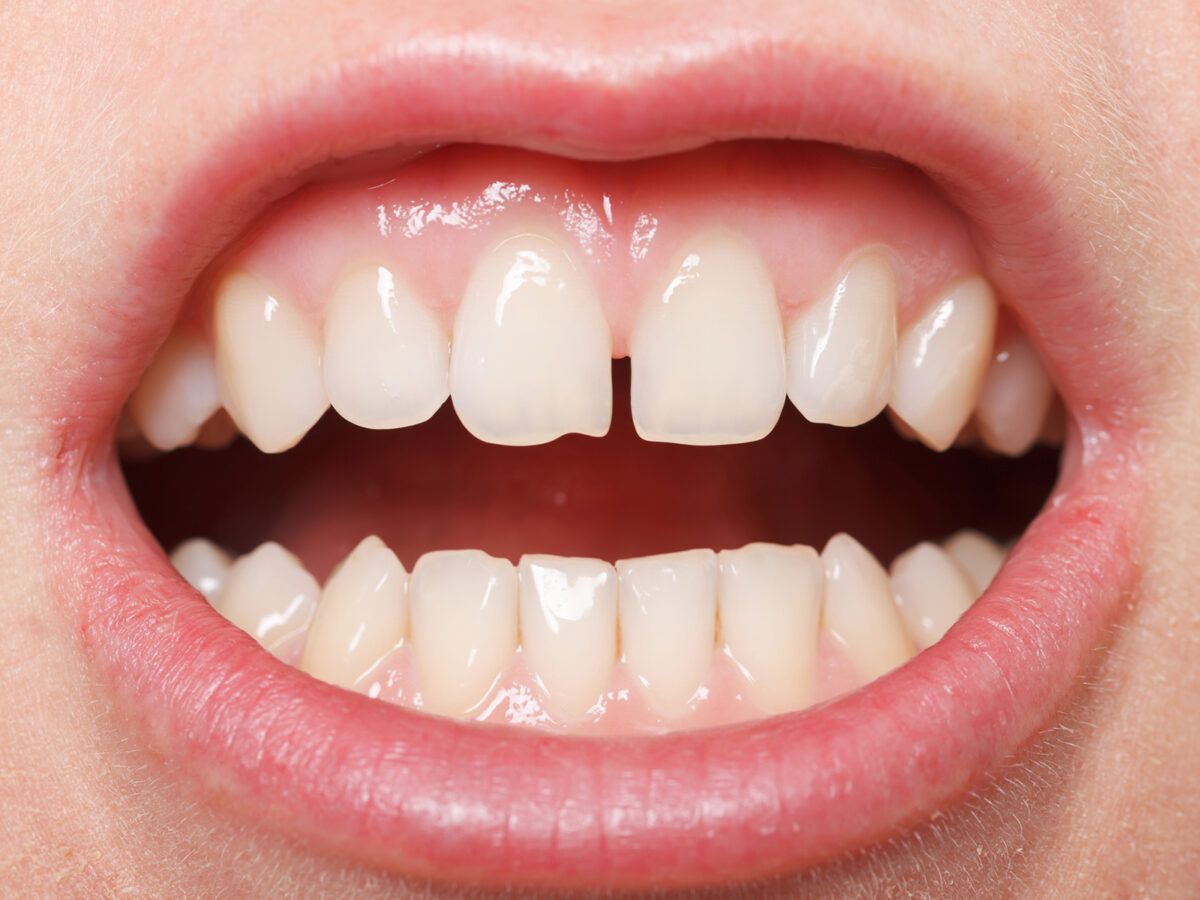Blog
Dental hygiene tips for healthy teeth & gums

How Does Diastema Affect My Oral Health?
Diastema, commonly known as tooth spacing, refers to gaps or voids between teeth. While some people view their diastema as a unique feature, others are concerned about its impact on their oral health. This article will explore the effects of diastema on oral health, including its causes, implications, and treatment options.
Why Does Diastema Occur?
Several factors can lead to diastema. One of the most common is the size of an individual’s natural teeth. A dental gap can emerge when there’s a significant size difference between the upper front teeth, known as the maxillary central incisors.
Tooth loss can also result in a dental gap. When a tooth is absent or fails to emerge, surrounding teeth might shift, creating a gap. Some individuals habitually push their tongue against their front teeth when swallowing, a behavior known as tongue thrusting. Continuous pressure from this action can push the teeth forward, potentially leading to diastema.
Progressive periodontal disease can damage the gums and the supporting bone structure, leading to loose teeth and gaps. Diastema can also be hereditary, suggesting that genetics might influence its occurrence. The spacing between teeth and the size and shape of the jaw can have genetic components.
Implications for Dental Health
While diastema itself isn’t inherently harmful, it can have several repercussions on your oral health:
- Spaces between teeth can trap food particles, making thorough cleaning challenging. This increases susceptibility to tooth decay and gum disease.
- Diastema can affect speech and pronunciation if it alters the tongue’s natural position during speech.
- The cosmetic appearance of diastema can impact an individual’s social and emotional well-being.
- Diastema can be associated with temporomandibular joint (TMJ) disorders due to potential changes in jaw and bite alignment.
Treatment Options
The treatment for diastema varies based on its cause and severity:
- Orthodontics, such as braces or clear aligners, can address dental gaps resulting from size discrepancies or slight misalignments. Through orthodontic treatment, teeth are gradually repositioned, closing the gap.
- Dental bonding, which uses tooth-colored resin, can correct minor cosmetic issues, offering an affordable and low-maintenance solution for diastema.
- Veneers, thin porcelain shells designed to cover the front of teeth, can conceal diastema, providing a straightforward and aesthetically pleasing solution.
- For diastema resulting from tooth loss, dental implants might be recommended. These act as replacement tooth roots, anchoring crowns, or bridges to restore the appearance and function of missing teeth.
- If gum disease is the underlying cause of diastema, treating the gums is essential to prevent further tooth movement and gap formation.
- After orthodontic treatment, wearing a retainer is commonly advised to maintain the new tooth positions and prevent diastema recurrence.
Preventative Measures
While not all instances of diastema can be prevented, certain measures can promote oral health and reduce the risk of this cosmetic issue:
- Regular dental check-ups can detect and address diastema and other oral health issues early on.
- Routine brushing and flossing can remove plaque and food particles, preventing cavities and gum recession.
- Early consultations with an orthodontist can preemptively address concerns about tooth size or alignment.
- Individuals with a tongue-thrusting habit should seek guidance from a dentist or speech therapist to address and correct the behavior.
Conclusion
Diastema, or gaps between teeth, can have various implications for oral health, ranging from an increased risk of cavities and gum disease to potential impacts on speech and self-confidence. Fortunately, there are multiple treatment options available, from orthodontics to dental bonding and veneers.
Preventative measures, such as regular dental check-ups and proper oral hygiene, can also play a crucial role in maintaining optimal oral health. Ultimately, the approach to treating diastema should align with the patient’s preferences and objectives, whether they are cosmetic, functional, or both.
